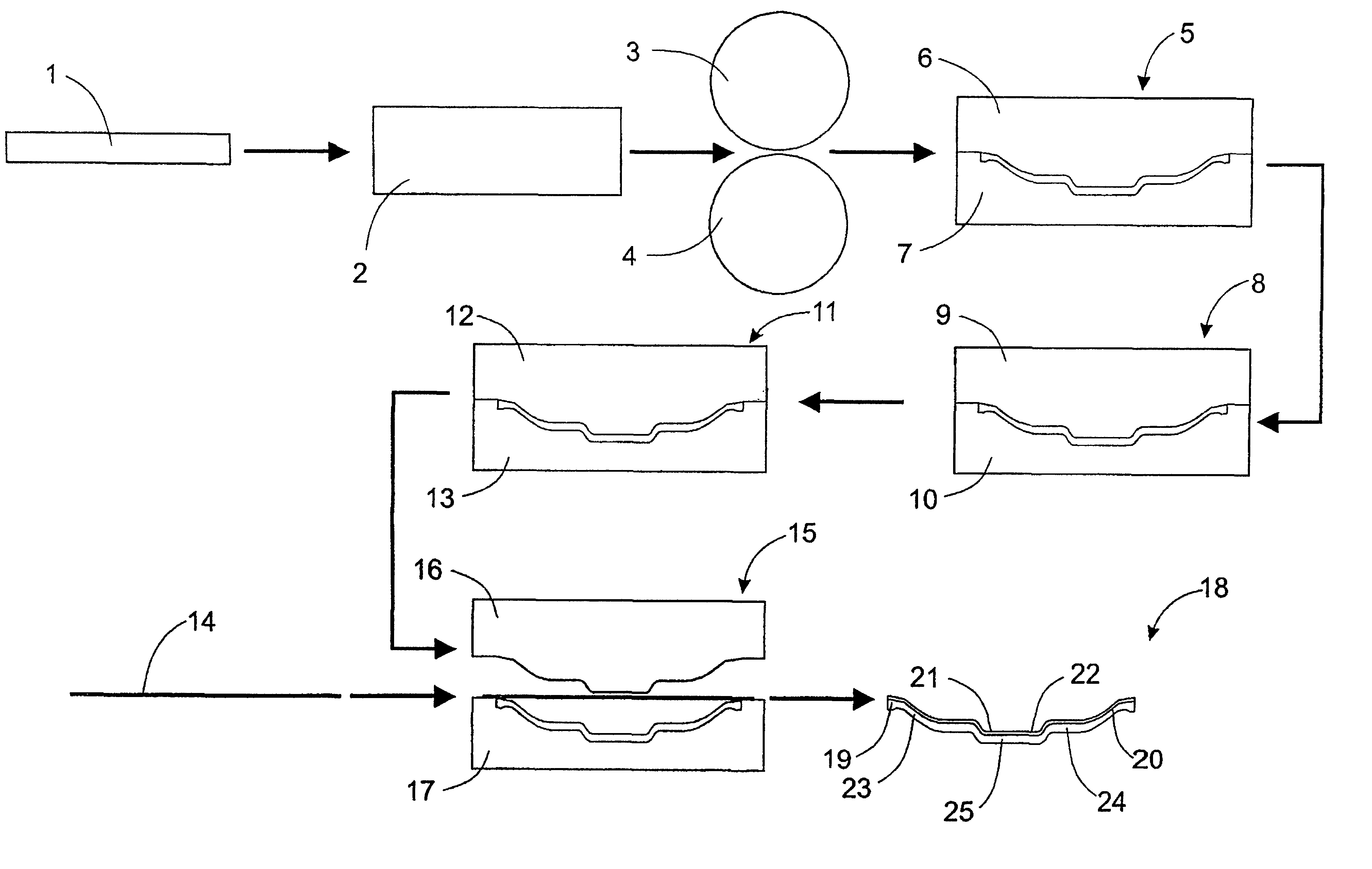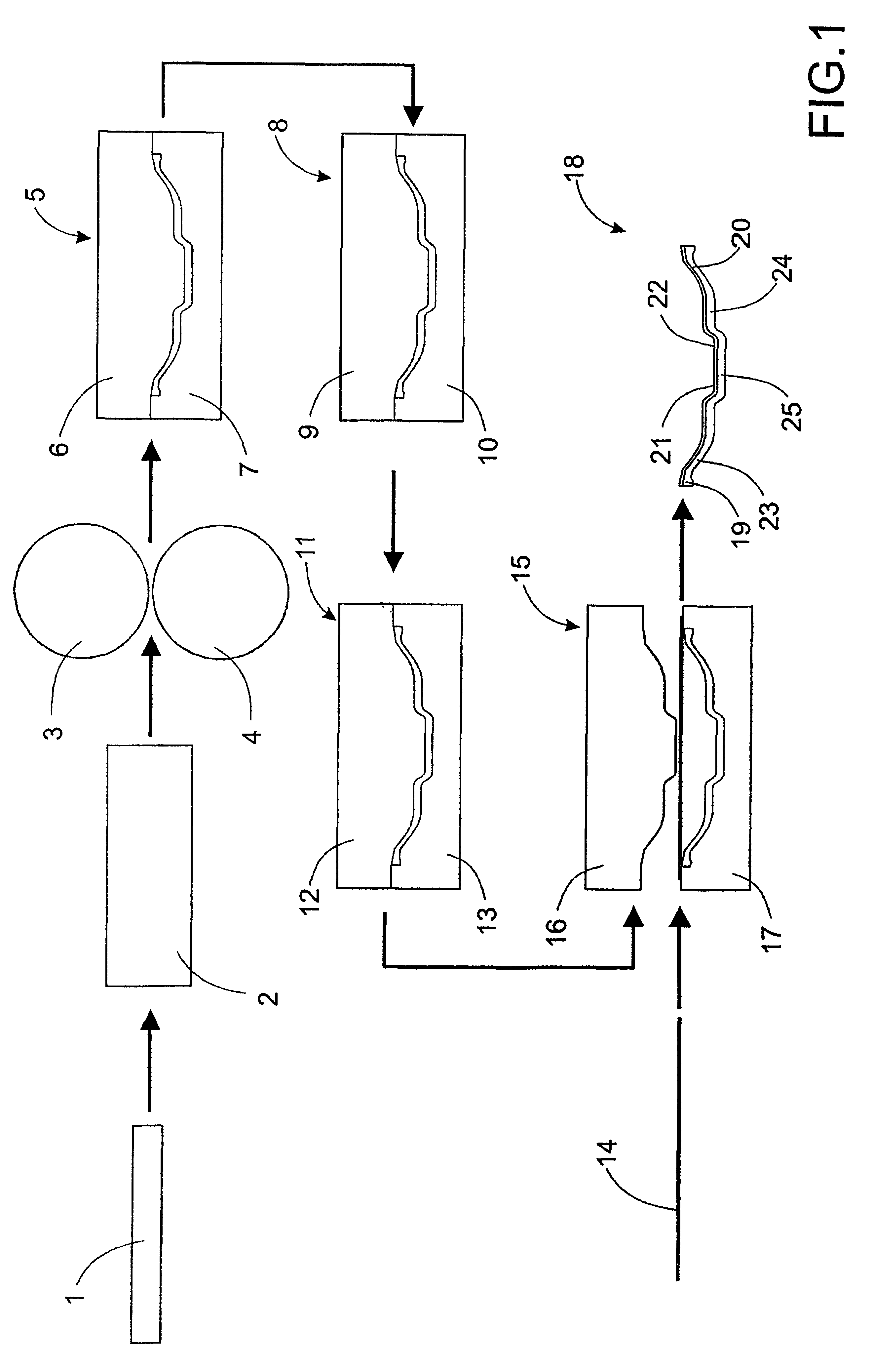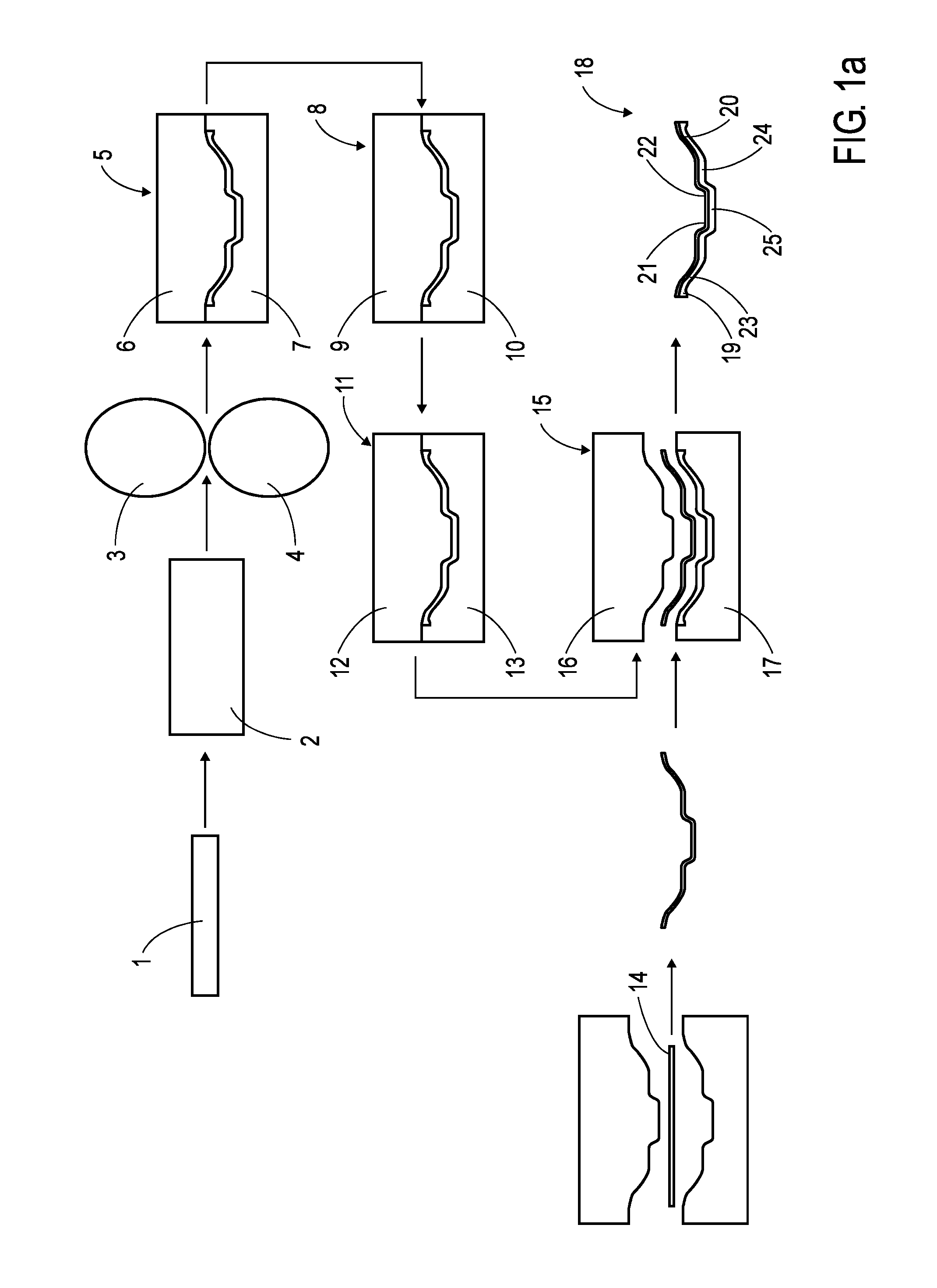Method for producing a vehicle axle
a technology of vehicle axles and axles, which is applied in the field of vehicle axle production, can solve the problems of difficult optimization, difficult to achieve such a solution, and heavy forged products, and achieve the effects of increasing the torsional rigidity of the member, constant material thickness, and optimizing the material thickness of the construction elemen
- Summary
- Abstract
- Description
- Claims
- Application Information
AI Technical Summary
Benefits of technology
Problems solved by technology
Method used
Image
Examples
Embodiment Construction
[0027]FIG. 1 diagrammatically illustrates a preferred embodiment of a method conducted according to the teachings of the present invention which includes a number of steps for the production of a composite hollow construction element, exemplarily, a front axle beam for heavy vehicles.
[0028]A first blank 1, which has been cut to a predetermined length, is directed through an induction furnace 2 in which it is heated to working temperature. Where, for example, air-hardening, microalloyed steel is used, the blank is heated to 1250-1300° C., and preferably to 1280° C. Once the correct temperature has been reached, the blank is directed through a pair of profiled rollers 3, 4, which are profiled (exteriorly adapted) to give the blank 1 a suitable initial cross section along its longitudinal extent. Through suitable configuration of the respective profiles of the rollers 3, 4, an intermediate product is obtained, whose cross section and material thickness varies along the length of the bl...
PUM
| Property | Measurement | Unit |
|---|---|---|
| temperature | aaaaa | aaaaa |
| height | aaaaa | aaaaa |
| width | aaaaa | aaaaa |
Abstract
Description
Claims
Application Information
 Login to View More
Login to View More - R&D
- Intellectual Property
- Life Sciences
- Materials
- Tech Scout
- Unparalleled Data Quality
- Higher Quality Content
- 60% Fewer Hallucinations
Browse by: Latest US Patents, China's latest patents, Technical Efficacy Thesaurus, Application Domain, Technology Topic, Popular Technical Reports.
© 2025 PatSnap. All rights reserved.Legal|Privacy policy|Modern Slavery Act Transparency Statement|Sitemap|About US| Contact US: help@patsnap.com



